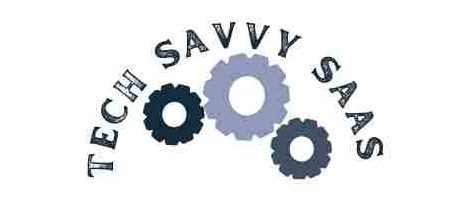Software as a Service (SaaS) has become a pivotal technology in the modern digital landscape, radically altering how businesses operate globally. By offering software on a subscription basis and delivering it via the cloud, SaaS eliminates the need for local installation, maintenance, and rigorous upgrades that were staples of traditional software use.
The evolution of SaaS is marked by its continuous adaptation to new technologies and market demands. Initially focused on providing basic software solutions such as email and collaboration tools, SaaS has expanded to encompass a wide range of business functions, including advanced analytics, business intelligence, customer relationship management (CRM), and enterprise resource planning (ERP). This transformation is powered by the core components of SaaS: scalability, accessibility, and security. These features ensure that SaaS can support businesses in becoming more agile and efficient, responding more quickly to changes and opportunities in the market.
The aim of this discussion is to delve into how SaaS is catalyzing digital transformation across various sectors, including healthcare, retail, manufacturing, and education. By integrating cloud-based services, SaaS not only enhances business efficiency but also drives innovation and growth.

How SaaS is Revolutionizing Different Industries
- How SaaS is Revolutionizing Different Industries
- How SaaS is Revolutionizing Different Industries
- Manufacturing: How Are SaaS Applications Optimizing Supply Chain and Production?
- Education: How Is SaaS Facilitating Remote Learning and Administration?
- Key Features of Successful SaaS Solutions
- Integration Capabilities: How Do SaaS Solutions Connect with Other Tools?
- Security: How Does SaaS Ensure Data Protection?
- Key Takeaways
- Conclusion
In the healthcare industry, SaaS applications are transforming operations by enabling more efficient data management and improved patient care. These systems provide healthcare professionals with real-time access to comprehensive patient data. This immediacy and completeness of information are crucial for making informed medical decisions, potentially saving lives and improving treatment outcomes.
For instance, Epic Systems, a provider of health care software, offers a SaaS model that allows hospitals and clinics to access patient records securely from any location. This system not only speeds up the workflow but also enhances the accuracy of patient care with features like medication tracking, appointment scheduling, and detailed medical histories.
Moreover, integrating artificial intelligence (AI) with SaaS in healthcare has led to significant advancements in diagnostics and treatment plans. AI algorithms can analyze vast amounts of data from SaaS-based platforms to detect patterns and predict health outcomes. A notable example is IBM Watson Health, which uses AI to analyze data from thousands of patient records provided through SaaS applications to recommend personalized treatment plans. This integration of AI and SaaS in healthcare has been shown to improve diagnostic accuracy and patient outcomes significantly. According to a study published by the Journal of Medical Internet Research, AI-enhanced SaaS applications can reduce diagnostic errors by up to 30% and increase the efficiency of treatment planning by 45%.
How SaaS is Revolutionizing Different Industries
In the retail sector, SaaS tools have become fundamental in transforming customer relationship management (CRM) by utilizing data analytics to personalize marketing efforts and enhance sales efficiency. These tools analyze customer data—preferences, purchase history, browsing patterns—to tailor marketing strategies that target specific customer needs and preferences, thereby boosting engagement and conversion rates.
For example, Salesforce Commerce Cloud is a SaaS solution widely adopted by retail companies to integrate customer data across multiple touchpoints, creating a unified customer view that helps in delivering personalized experiences. Retailers using Salesforce have reported up to a 20% increase in customer engagement and a 15% rise in sales conversions, as personalized campaigns resonate more effectively with individual customer needs.
A real-life example is Stitch Fix, an online clothing retailer that uses SaaS to power its entire business model. The company combines data science with the expertise of personal stylists to offer customized clothing selections to its customers. Stitch Fix’s SaaS platform analyzes customer feedback, style preferences, and purchase patterns to predict what clothing items will be hits or misses, which in turn helps to increase customer satisfaction and retention. As a result, Stitch Fix has seen a substantial increase in customer loyalty, with repeat customers now making up over 80% of their total sales.
Manufacturing: How Are SaaS Applications Optimizing Supply Chain and Production?
In manufacturing, SaaS applications provide essential tools for enhancing supply chain management through predictive analytics and improving operational performance, thereby reducing time to market. These cloud-based SaaS solutions offer real-time data and insights that help manufacturers forecast demand more accurately, manage inventory levels efficiently, and streamline production processes.
A noteworthy implementation is by General Electric, which utilizes its Predix platform, a SaaS solution designed for industrial data and analytics. This platform allows GE to monitor equipment and predict failures before they occur, significantly reducing downtime and maintenance costs. By integrating SaaS applications, GE has improved its supply chain responsiveness and reduced production delays by approximately 25%.
Another benefit of SaaS in manufacturing is cost management. Cloud-based logistics tools enable manufacturers to optimize routes and delivery schedules, leading to lower transportation costs and better resource allocation. For instance, companies using SAP Business ByDesign, a cloud ERP solution, have successfully cut logistics costs by as much as 20% while also enhancing delivery timeliness.
Education: How Is SaaS Facilitating Remote Learning and Administration?
In the education sector, SaaS products are playing a crucial role in facilitating remote learning and enhancing administrative efficiency. Educational institutions are leveraging these digital platforms and tools to offer accessible and scalable educational services.
A prominent example is the University of Arizona, which adopted Google Workspace for Education—a suite of cloud-based SaaS tools—to support remote learning. This integration allows for seamless collaboration between students and faculty, regardless of geographical locations, and supports a range of functions, from virtual classrooms to assignment submission portals. The university reported a 30% increase in administrative efficiency and a significant improvement in student engagement since the adoption.
Moreover, SaaS tools enable educational institutions to scale their services quickly to meet varying demands without substantial upfront investment in IT infrastructure. Canvas, a widely used SaaS learning management system (LMS), exemplifies this with its ability to easily add and manage online courses, which can scale to accommodate thousands of students simultaneously.
Key Features of Successful SaaS Solutions
Scalability is a cornerstone of Software as a Service (SaaS), enabling businesses to adjust their usage and capabilities without heavy investments in physical infrastructure. This feature is particularly beneficial for small businesses and startups, which might not have the capital to invest heavily in software. The cloud-based model of SaaS allows these companies to scale their operations efficiently as their needs evolve.
For example, Dropbox, a leader in cloud storage solutions, provides SaaS that effortlessly scales to match user requirements, accommodating everything from a few gigabytes to several petabytes of data. Businesses using Dropbox can start with a modest amount of storage and increase their subscription as their data storage needs grow. This scalability has helped Dropbox users see an average 30% reduction in IT costs associated with data management.
Another example is Shopify, a SaaS platform for e-commerce, which allows small retailers to start selling online with a basic plan and then scale up to more advanced features like increased inventory management and advanced analytics as their business grows. Shopify reports that merchants on their platform were able to grow their sales by an average of 126% year over year.
Integration Capabilities: How Do SaaS Solutions Connect with Other Tools?
The ability to integrate seamlessly with other tools is an essential feature of successful SaaS solutions. This integration capability enhances operational efficiency and strengthens data-driven decision-making strategies by allowing various systems to communicate and operate harmoniously.
Salesforce, one of the largest SaaS CRM systems, exemplifies powerful integration capabilities. It can integrate with a multitude of other platforms, such as Microsoft Office, Google Analytics, and even other SaaS offerings like Slack. This integration helps businesses unify their sales, marketing, and customer service efforts into a single, streamlined workflow, which enhances the efficiency of data utilization. Salesforce users typically see up to a 25% increase in their sales productivity due to these integrations.
In another instance, Zapier, a tool that specializes in creating connections between different apps, allows companies to create automated workflows that can connect their SaaS solutions with over 2,000 other applications. This ability helps businesses automate repetitive tasks, ensuring data flows seamlessly across platforms, enhancing productivity, and reducing the chance for errors.
Security: How Does SaaS Ensure Data Protection?
Security is a paramount feature of any SaaS solution, especially when dealing with industries that handle sensitive information, such as finance and healthcare. Ensuring robust security measures, compliance with regulatory standards, and protecting customer data are critical for maintaining trust and operational integrity.
AWS (Amazon Web Services), a leading cloud service provider used by SaaS companies, offers extensive security features that comply with the strictest privacy laws and industry standards, such as GDPR and HIPAA. AWS provides features like data encryption, network security, and identity access management that safeguard the data stored on its servers.
Furthermore, DocuSign, a SaaS product that manages electronic agreements, is another example where security is critical. It utilizes strong encryption protocols to ensure that all documents are securely signed and stored, providing an audit trail for every transaction to ensure compliance and security. DocuSign’s adherence to security has led to its widespread adoption in sensitive sectors, boasting a client list that includes large financial institutions and health organizations.
Key Takeaways
- Scalability and Flexibility: SaaS allows businesses of all sizes to scale operations rapidly without significant upfront costs. This flexibility supports dynamic growth and adaptation to market changes.
- Enhanced Customer Personalization: By analyzing comprehensive customer data, SaaS tools enable personalized marketing strategies that significantly improve customer engagement and satisfaction.
- Operational Efficiency: Through seamless integrations with existing tools and systems, SaaS solutions streamline business operations, reducing redundancy and increasing productivity.
- Cost-effectiveness: With a subscription-based model, SaaS reduces the need for extensive IT infrastructure, leading to lower ongoing expenses in technology management.
- Improved Data Security: Offering robust security features compliant with global standards, SaaS ensures that business data is secure and privacy regulations are met, which is crucial for industries handling sensitive information.
- Data-Driven Decision Making: SaaS provides businesses with actionable insights through advanced analytics capabilities, enabling data-driven strategies that enhance decision-making processes.
- Market Expansion: SaaS facilitates easier entry into new markets by reducing the typical barriers associated with setting up local IT infrastructure, thus supporting global business strategies.
- Innovation and Competitiveness: Continuous updates and improvements in SaaS products ensure that businesses remain at the forefront of technology, maintaining a competitive edge in their industries.
Conclusion
As we conclude our exploration of SaaS Magic: Transforming Businesses with Software, it’s clear that SaaS technology has not only modernized but revolutionized business operations across various industries. From healthcare to retail, from manufacturing to education, SaaS has demonstrated its capacity to enhance efficiency, security, and scalability.
Businesses looking to thrive in today’s fast-paced digital era must assess their operational needs and consider how SaaS can be integrated to drive their digital transformation efforts. By adopting SaaS solutions, companies can not only streamline their operations but also leverage powerful analytics to gain insights that drive smarter, more effective business strategies.
Let’s embrace the transformative potential of SaaS with open arms. Investing in SaaS solutions is not merely about keeping up with technological advancements—it’s about leading the charge towards innovation, strategic growth, and sustained market leadership. The journey towards digital excellence is ongoing, and SaaS stands as a pivotal tool in this transformative expedition.
More Post
- Navigating the Tech Wave: The Latest Trends for Success
- The Digital Renaissance: The Evolution of Technology in the 21st Century
- How Are Cutting-Edge Technologies Fundamentally Transforming Business Models?
- Tech Spotlight: Trends Shaping the Digital Era
- Innovation Unleashed: Exploring the Hottest Trends in Tech






